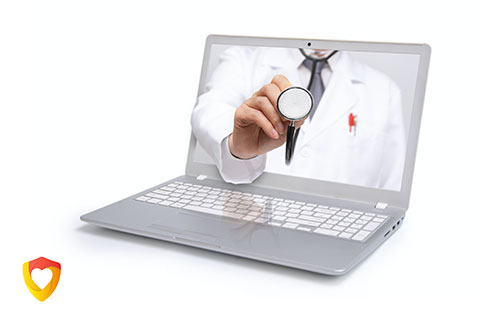A week ago, a patient who had previously tested positive for COVID-19 arrived at an emergency department (ED) by ambulance. She’d called 911 after experiencing shortness of breath. En route to the hospital, EMS personnel noted that she appeared stable and had stable vitals and good oxygen saturation.
In compliance with EMTALA, the federal law that mandates an in-person medical screening exam (MSE) for every ED patient, two nurses and I entered the patient’s room. Like ED providers everywhere, we were working to preserve our dwindling supply of personal protective equipment (PPE). This case required all three of us to gown up and wear face masks and eye protection, which then needed to be removed and cleaned or discarded. While we tried to minimize contact with the patient by making use of the intercom, EMTALA required us to spend at least part of the visit face-to-face.
Fortunately, these regulations have just changed for the better.
On March 31, the Centers for Medicare and Medicaid Services (CMS) announced a series of blanket waivers for healthcare providers and facilities. These included a temporary easing of the EMTALA requirements, allowing ED providers to conduct their entire visits solely via telehealth in appropriate cases during the public health emergency.
This is welcome news for healthcare providers working on the front lines of the COVID-19 pandemic and the communities we serve. The expansion of telehealth will help to protect our healthcare workforce, conserve PPE, and allow work-restricted and quarantined providers to assist with patient care from home.
What’s changed?
Typically, EMTALA mandates an in-person MSE for every patient who comes to the ED, including patients with possible or confirmed COVID-19 infection.
The new guidelines allow providers to conduct MSEs—and indeed entire ED visits—via telehealth. This approach is most appropriate for patients who are not experiencing respiratory distress or other signs of serious illness. The patient described above is a great example. She was stable on arrival, able to communicate with us, and indeed was discharged home from the ED.
Expanded use of telehealth has many benefits for patients, providers, and communities:
- Reduces the risk of disease transmission within the ED or hospital.
- Protects the healthcare workforce by reducing unnecessary face-to-face contact.
- Conserves PPE supplies for direct patient care.
- Eases workforce shortages by allowing quarantined and work-restricted providers to participate in patient screening and management.
New delivery models
The blanket waivers have paved the way for new models of ED care during the pandemic. For example, in appropriate cases, teams can now use both on-site and off-site providers to screen and treat ED patients with possible or confirmed COVID-19 via telehealth—with appropriate state licensing and facility credentialing. In addition, it’s permitted to screen arriving ED patients via telehealth and redirect those seeking COVID-19 testing to a designated “fever clinic” on campus.
Of course, telehealth screening will not be appropriate in all cases. Some patients with possible or confirmed COVID-19 will present with breathing difficulties and other symptoms necessitating in-person care.
Tele-MSE best practices
Many ED providers will be unfamiliar with telemedicine. Here are some guidelines to follow to ensure a smooth transition for your team.
- Use local ED staff as your panel. The federal government has significantly relaxed enrollment requirements. But for now, it’s easiest to use physicians and advanced providers who are already credentialed and privileged to practice telehealth at your hospital.
- When possible, use a HIPAA-compliant platform with video. Many emergency medicine groups and hospitals already use apps like RingCentral, Zoom, or Microsoft Teams for telemedicine encounters. Guidelines have recently been relaxed to allow non-HIPAA compliant apps such as FaceTime and Skype to be used.
- Protect patient privacy. Providers should conduct telehealth visits while alone in a quiet room with closed doors and windows. Prevent interruptions by placing a DO NOT DISTURB sign on the door. At home, ensure that pets and kids are supervised. And remember to seek consent for every telehealth encounter.
The loosening of EMTALA regulations to remove the in-person exam requirement is a positive step in the fight against COVID-19. While this pandemic will surely challenge our healthcare system, it will also likely break down regulatory barriers that prevent us from using telehealth to its fullest potential. For now, the expanded use of telehealth will make it easier for emergency providers to deliver effective care while protecting our patients and ourselves.
Looking beyond this epidemic—which is admittedly difficult to do as a front-line provider in Seattle right now—the extensive use of telemedicine has significant implications for our future. Thousands of providers and potentially tens of millions of patients will have successfully used telehealth platforms for visits. I expect the EMTALA regulations to revert at the end of the epidemic, but I also expect we will take new lessons in delivering care into the future.























